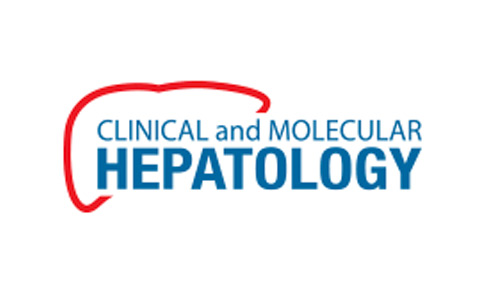- Follow Us
Scientific Publications
High-profile publications featuring CDI Labs next-gen proteomics technologies and services
354 Total Publications
Refine Your Search
Publication Details
- Date
- Link
- + Abstract

Annals of Neurology
- Main Product: HuProt
- Paraneoplastic Calmodulin Kinase-Like Vesicle-Associated Protein (CAMKV) Autoimmune Encephalitis
- Michael Gilligan MB, BCh, Connie E. Lesnick MS, Yong Guo MD, PhD, Michael J. Bradshaw MD, Shafeeq S. Ladha MD, Mihaela...
- Dept of Laboratory Medicine and Pathology, Mayo Clinic
To report an autoimmune paraneoplastic encephalitis characterized by immunoglobulin G (IgG) antibody targeting synaptic protein calmodulin kinase-like vesicle-associated (CAMKV).

Dove Press
- Main Product: HuProt
- Clinical Significance of Uncommon, Non-Clinical, and Novel Autoantibodies
- Shurin MR , Wheeler SE
- Division of Clinical Immunopathology, Dept of Pathology, University of Pittsburgh Medical Center
Autoantibodies are a common mark of autoimmune reaction and their identification in the patients’ serum, cerebrospinal fluid, or tissues is generally believed to represent diagnostic or prognostic biomarkers of autoimmune diseases or autoinflammatory conditions. Traditionally, autoantibody testing is an important part of the clinical examination of suspected patients, and in the absence of reliable T cell tests, characterization of autoantibody responses might be suitable in finding causes of specific autoimmune responses, their strength, and sometimes commencement of autoimmune disease.

Clinical and Molecular Hepatology
- Main Product: HuProt
- Ursolic acid targets secreted phosphoprotein 1 to regulate Th17 cells against metabolic dysfunction-associated steatotic liver disease
- Yiyuan Zheng, Lina Zhao, Zhekun Xiong, Chaoyuan Huang, Qiuhong Yong, Dan Fang, Yugang Fu, Simin Gu, Chong Chen, Jiacheng...
- Dept of Gastroenterology, Shanghai University of Traditional Chinese Medicine
Metabolic dysfunction-associated steatotic liver disease (MASLD) has become an increasingly important health challenge, with a substantial rise linked to changing lifestyles and global obesity. Ursolic acid, a natural pentacyclic triterpenoid, has been explored for its potential therapeutic effects. Given its multifunctional bioactive properties, this research further revealed the pharmacological mechanisms of ursolic acid on MASLD.

Elsevier: Carbohydrate Polymers
- Main Product: HuProt
- Improving impact of heparan sulfate on the endothelial glycocalyx abnormalities in atherosclerosis as revealed by glycan-protein interactome
- Qingqing Chen, Xiaohui Xu, Shaoshuai Xie, Anran Sheng, Naihan Han, Zhenyu Tian, Xiaowei Wang, Fuchuan Li, Robert J....
- National Glycoengineering Research Center, Shandong University
Endothelial dysfunction induced by oxidative stress is an early predictor of atherosclerosis, which can cause various cardiovascular diseases. The glycocalyx layer on the endothelial cell surface acts as a barrier to maintain endothelial biological function, and it can be impaired by oxidative stress. However, the mechanism of glycocalyx damage during the development of atherosclerosis remains largely unclear. Herein, we established a novel strategy to address these issues from the glycomic perspective that has long been neglected. Using countercharged fluorescence protein staining and quantitative mass spectrometry, we found that heparan sulfate, a major component of the glycocalyx, was structurally altered by oxidative stress.

bioRxiv
- Main Product: HuProt
- PAK6 rescues pathogenic LRRK2-mediated ciliogenesis and centrosomal cohesion defects in a mutation-specific manner
- Lucia Iannotta, Rachel Fasiczka, Giulia Favetta, Yibo Zhao, Elena Giusto, Elena Dall’Ara, Jianning Wei, Franz Y. Ho,...
- Dept of Biology, University of Padova
P21 activated kinase 6 (PAK6) is a serine-threonine kinase with physiological expression enriched in the brain and overexpressed in a number of human tumors. While the role of PAK6 in cancer cells has been extensively investigated, the physiological function of the kinase in the context of brain cells is poorly understood. Our previous work uncovered a link between PAK6 and the Parkinson’s disease (PD)-associated kinase LRRK2, with PAK6 controlling LRRK2 activity and subcellular localization via phosphorylation of 14-3-3 proteins.

Elsevier: Chinese Journal of Natural Medicines
- Main Product: HuProt
- Repurposing diacerein to suppress colorectal cancer growth by inhibiting the DCLK1/STAT3 signaling pathway
- Qiaobei Ye, Yu Zhu, Meng Shi, Linxi Lv, Yuyan Gong, Luyao Zhang, Lehe Yang, Haiyang Zhao, Chengguang Zhao, Huanhai Xu
- Affiliated Yueqing Hospital, Wenzhou Medical University
Double cortin-like kinase 1 (DCLK1) exhibits high expression levels across various cancers, notably in human colorectal cancer (CRC). Diacerein, a clinically approved interleukin (IL)-1β inhibitor for osteoarthritis treatment, was evaluated for its impact on CRC proliferation and migration, alongside its underlying mechanisms, through both in vitro and in vivo analyses. The study employed MTT assay, colony formation, wound healing, transwell assays, flow cytometry, and Hoechst 33342 staining to assess cell proliferation, migration, and apoptosis.

AACR: Cancer Research
- Main Product: HuProt
- Moving beyond conventional autoimmune thyroiditis autoantibodies to predict immune checkpoint inhibitor induced hypothyroidism
- Kim Blenman, Ondrej Blaha, Courtney Gibson, Sherry Qiu, Holly Rushmeier, Milad Ibrahim, Shi Qiu, Michelle Krosgsgaard,...
- Yale University
Treatment emergent adverse events (TEAEs) thyroiditis/thyrotoxicosis and hypothyroidism occur in up to 40% of patients treated with immune checkpoint inhibitors (ICIs). Conventional autoimmune thyroiditis autoantibodies (AutoAbs) (thyroglobulin (TG); thyroid peroxidase (TPO)) do not predict these TEAEs. We previously reported that pretreatment serum AutoAb profiles were associated with all severe TEAEs for melanoma patients treated with ICIs. Herein, we test if pre-existing AutoAbs could predict ICI induced hypothyroidism (TEAE ThyDis).

Journal of Clinical Investigation
- Main Product: HuProt
- Neutralizing IFN-γ autoantibodies are rare and pathogenic in HLA-DRB1*15:02 or 16:02 individuals
- Jessica N. Peel, Rui Yang, Tom Le Voyer, Adrian Gervais, Jérémie Rosain, Paul Bastard, Anish Behere, Axel Cederholm,...
- Giles Laboratory of Human Genetics of Infectious Diseases, The Rockefeller University
Weakly virulent environmental mycobacteria (EM) can cause severe disease in HLA-DRB1*15:02 or 16:02 adults harboring neutralizing anti-IFN-γ autoantibodies (nAIGAs). The overall prevalence of nAIGAs in the general population is unknown, as are the penetrance of nAIGAs in HLA-DRB1*15:02 or 16:02 individuals and the proportion of patients with unexplained, adult-onset EM infections carrying nAIGAs.

SSRN
- Main Product: HuProt
- Echinatin suppresses cutaneous squamous cell carcinoma by targeting GSTM3 mediated ferroptosis
- Ziwei Kang, Peiru Wang, Bo Wang, Yu Yana, Zijun Zhao, Chunxiao Li, Long Wen, Mingshun Wu, Guorong Yan, Xiuli Wang,...
- Institute of Photomedicine, Shanghai Skin Disease Hospital, School of Medicine, Tongji University,
Cutaneous squamous cell carcinoma (cSCC) is one of the most common skin cancers in urgent need of effective drugs. Echinatin, a natural compound extracted from Glycyrrhiza plants, exhibited promising anti-tumor effects. However, the efficacy and direct target of Echinatin in cSCC remain unclear.

Aging
- Main Product: HuProt
- FHND004 inhibits malignant proliferation of multiple myeloma by targeting PDZ-binding kinase in MAPK pathway
- Hongjie Wu, Jinjun Qian, Lianxin Zhou, Tingting Hu, Yuanjiao Zhang, Chen Wang, Ye Yang, Chunyan Gu
- Nanjing Hospital of Chinese Medicine
Inhibitors of Epidermal growth factor receptor tyrosine kinase (EGFR-TKIs) are producing impressive benefits to responsive types of cancers but challenged with drug resistances. FHND drugs are newly modified small molecule inhibitors based on the third-generation EGFR-TKI AZD9291 (Osimertinib) that are mainly for targeting the mutant-selective EGFR, particularly for the non-small cell lung cancer (NSCLC).